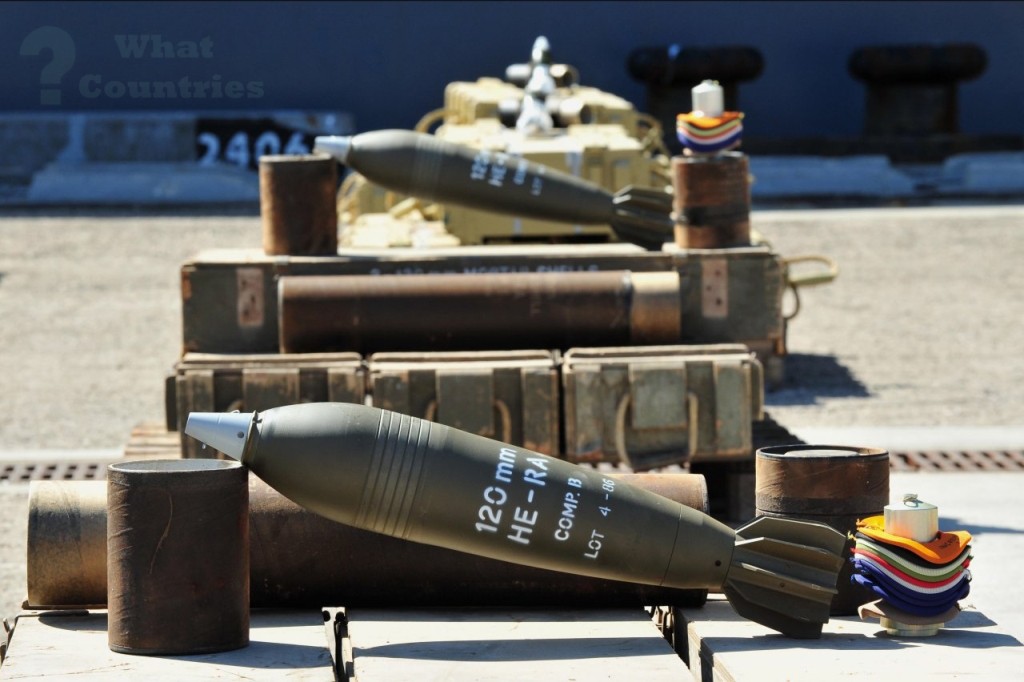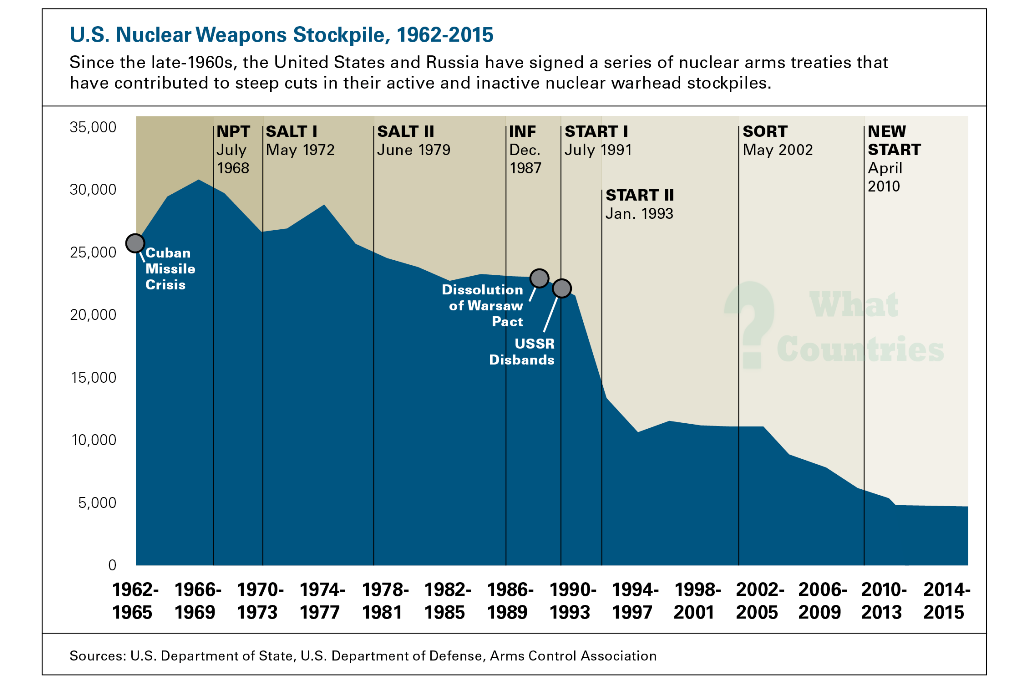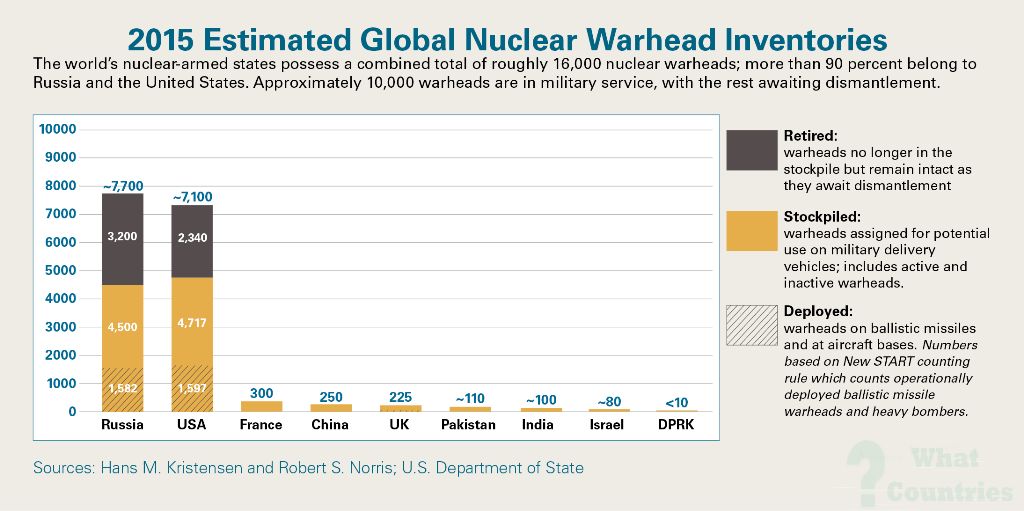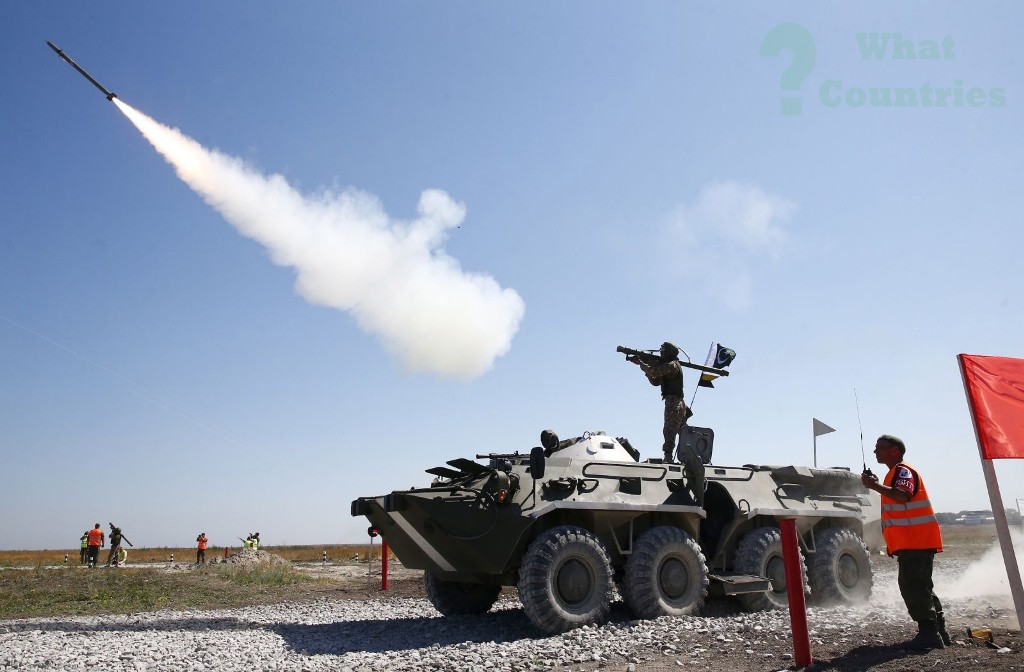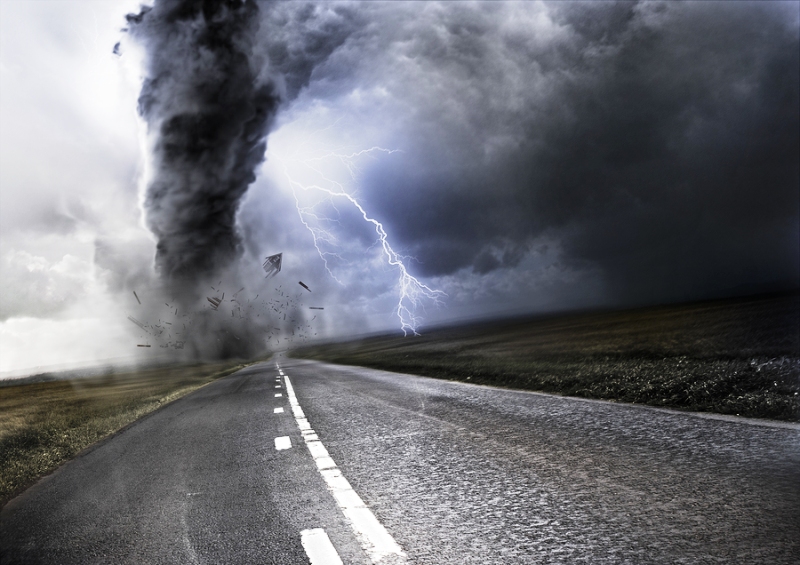What Countries Have Nuclear Weapons and what are the countries with most nuclear weapons today? These are the questions that everyone should know. At the present era of atomic power, the USA is likely to have a monopoly on its innovative nuclear weapons, though the mysteries and the technology for producing nuclear weapons quickly increased. After the four years when the United States carried its initial atomic test blast in July 1945 and dropped atomic bombs on the cities of and Hiroshima and Nagasaki in August 1945, the Soviet Union directed its first atomic test blast. Later on, the United Kingdom conducted its first blast in 1952, France in 1960 and China in 1964 following the United States. Trying to stop the nuclear weapon explosions from more growth, the USA, and other same thinking states signed the nuclear Nonproliferation Treaty (NPT) in 1968 as well as the Comprehensive Nuclear Test Ban Treaty (CTBT) in 1996.
After the beginning of the NPT, numerous states have dropped atomic warhead programs, though another have challenged the nuclear Nonproliferation Treaty (NPT). Pakistan, India, and Israel have never more signed the treaty and own atomic arsenals. Iraq launched a hidden atomic program during the reign of Saddam Hussein earlier the Persian Gulf War in 1991. Similarly, North Korea declared its resignation from the NPT in January 2003 and had experimented nuclear machines after that period. Libya and Iran have persevered undisclosed atomic projects in breach of the terms announced by treaty while Syria is assumed to conduct the same activity. However, nuclear nonproliferation victories outnumber defeats and terrible predictions decades past that the earth would be the house of dozens of states equipped with atomic warheads have not developed to pass.
Presently, the NPT was decided, the atomic stockpiles of the Soviet Union/Russia and the United States estimated in the tens of thousands. In earlier, the 1970s, the United States and Soviet/Russian officers arranged a set of mutual arms control deals and actions that restricted, and next decreased the measurement of their nuclear warheads. Notwithstanding that motion, Russia and the United States are still using over 1,500 decisive warheads on many hundred missiles and bombers —far higher than required to prevent any atomic attack. Furthermore, they are improving their atomic distribution means. If that defense equipment were utilized even on a small limit, it would cause catastrophic atomic destruction.
At present world, further nuclear arms states such as China, Pakistan, and India in general, are all trying cruise missile, modern ballistic missile, and sea-based nuclear control arrangements. Besides, Pakistan has seriously declined the volume of atomic weaponry control by advancing its tactical nuclear arsenals capacities to showcase the understood Indian traditional military warnings. North Korea maintains its atomic races in breach of its first denuclearization commitments. These armories, though less in quantity, are much destabilizing and threatening.
What Countries Have Nuclear Weapons in the World ?
There are five countries with the nuclear weapons that are Russia, United States, United Kingdon, France and China. Officially known as holding nuclear arsenals by the NPT. Despite the fact that the agreement legitimizes certain states’ atomic warheads, it further proves that they are not thought to produce and advance before-mentioned warheads in continuity.
Article VI of the treaty includes that any state-party is to
“pursue negotiations in good faith on effective measures relating to discontinuance of the nuclear projects competition very soon and nuclear disablement.”
In 2000, the five NWS performed themselves to an “unequivocal effort…to achieve the entire removal of their atomic equipment.” However, for now, the five advance to hold the majority of their atomic forces. Due to the undercover nature with that maximum governments manage data regarding their nuclear weapons, the maximum of the numbers here are reliable measures of all countries with the nuclear and their stocks, containing both necessary warheads, and lower-yield equipment pointed as tactical warheads. The United States and Russia also hold thousands of withdrawn weapons designed for dismantlement, not involved hereabouts.
Countries With Nuclear Weapons in the World
1. Russia
As per a most recent report in March 2015, Russia holds about 1,582 strategic weapons stationed on SLBMs, 515 ICBMs, and strategic bombers. The Federation of American Scientists predicts that Russia holds thousands of hidden strategic warheads and about 2,000 tactical atomic weapons making it one of the most powerful countries in the world. Furthermore, about 3,200 are likely to dismantlement.
2. United States
As per the March 2015 New START article, the USA has 1,597 strategic atomic warheads disposed on 785 ICBMs, SLBMs, and strategic bombers. The Federation of American Scientists have predicted that the USA’ non-deployed strategic weapons are approximately 2,800 in number, and the U.S planned atomic warhead amounts 500 warheads. As per the U.S. State Department, USA owned 4,717 active atomic arsenals as of September 30, 2014, containing strategic, tactical, and non-deployed warheads. Further weapons are scrapped and awaiting dismantlement.
3. France
As per a recent report, France holds about 300 overall warheads in numbers making it the third country with most atomic warheads in the world.
4. China:
China, world’s most populated and technologically advanced country holds the fourth spot in the list countries with the highest number of n in the world. It has around 260 atomic warheads.
5. United Kingdom:
Next name in our ranking list, the United Kingdom holds nearly 120 strategic warheads, of which not over 40 are stationed at sea at any time of need. The entire stockpile is up to 225 warheads.
Non-NPT Nuclear Weapons Countries
Three Countries— Pakistan, India and Israel —never joined the NPT and are reported to hold atomic weapons in their possession. Declaring its atomic program was for nonviolent goals, India tested its first atomic explosive device in 1974, and that experiment pushed Pakistan to ramp up production on its hidden nuclear arsenals program. Pakistan and India both openly showed their atomic weapon abilities with a series of tit-for-tat atomic experiments in May 1998.
As Pakistan and India, Israel has not carried an atomic experiment publicly. However, it does not accept or refuse to have atomic warheads and says that it will not be the beginning to launch atomic warheads in the Middle East. But, Israel is globally considered to hold nuclear weapons, while it is not sure how many warheads are possessed by Israel. The following arsenal judgments are meant to the number of fissile material—greatly enhanced plutonium and uranium —that all the countries are supposed to have created. Fissile stuff is the principal component in the production of atomic warheads. Israel and India are assumed to utilize plutonium in the production of their atomic weapons while Pakistan is believed to utilize extremely improved uranium.
Israel : Israel is reported to have about 80 atomic warheads, together with the fissile material that have the capacity to produce up to 200 warheads.
Pakistan: Pakistan is reported to have around 100 – 120 nuclear warheads.
India: India holds about 90-110 nuclear warheads.
List of Nuclear Weapons by Country at a Glance 2016
| Rank | Country | Nuclear Weapons |
|---|---|---|
| 1. | Russia | 7700 |
| 2. | United States | 7100 |
| 3. | France | 300 |
| 4. | China | 260 |
| 5. | United Kingdom | 225 |
| 6. | Pakistan | 100-120 |
| 7. | India | 90-110 |
| 8. | Israel | 80 |
| 9. | North Korea | 6-8 |
Countries with Fast Nuclear Weapons Proliferation Concern:
Iran is seeking a uranium-enhancing project and different plans that could give it the ability to manufacture bomb-grade fissile element and produce nuclear weapons during a few coming years. Contrary to the North Korea that has the elements for producing a tiny amount of nuclear warheads declared its removal from the NPT and then experimented the nuclear equipment. The question arises regarding how much further nuclear means North Korea has collected behind the weapons it has already examined. In September 2005, Pyongyang “committed to delivering all nuclear threats and current nuclear programs.”
Iran:
No public weapons or enough fissile element stockpiles for producing the atomic weapons. Though, the International Atomic Energy Agency (IAEA), the organization directed with proving that countries are not legally producing nuclear weapons, judged in 2003 that Iran had tried hidden nuclear projects to build the potential to produce fissile material indigenously. In July 2015, Iran and six global powers signed a long-term deal to significantly and verifiably Iran’s potential to generate supply for atomic weapons, and the IAEA continues its research and looking for Tehran’s nuclear plan.
North Korea:
Today North Korea is supposed to have 6-8 plutonium-based nuclear weapons as per 2015 estimates. In August 2013, North Korea again started the 5-megawatt heavy-water graphite-moderated reactor it utilized to obtain plutonium in the history for producing its nuclear weapons, although the performance of reactor since then has not been consistent. North Korea revealed a centrifuge plant in 2010. However, it is not clear if Pyongyang is utilizing the plant to generate greatly-enhanced uranium for atomic weapons. Experts estimate that North Korea could have the material for an additional 4-8 uranium-based warheads as of 2015.
Syria:
In Sept. 2007, Israel carried an airstrike on the U.S officials that was reported to be the construction area of a nuclear research reactor same like the Yongbyon reactor of North Korea. Intelligence officers advised the Congress officials on the airstrikes eight months next in April 2008, explaining the data pointing their experience that the locality was an unannounced nuclear reactor. Whereas the size of Syrian-North Korean nuclear agreement is unclear, it is thought to have started in 1997. After the inquiries of IAEA about the United States claims revealed tracks of hidden man-made uranium bits at both the locations of Syria’s revealed research reactor and the bombed facility. Syria was unable to present sufficient assistance to the IAEA for explaining the characteristics of the ruined area and acquisition endeavors that could be associated with a nuclear project.
States That Had both Nuclear Weapon Programs or Nuclear Weapons or at one time:
Ukraine, Belarus, and Kazakhstan acquired nuclear weapons afterward the 1991 downfall of Soviet Union in 1991, however, delivered them to Russia and tied with the NPT as non-nuclear-weapon countries. South Africa quietly began and demolished a tiny amount of nuclear weapons together with joining the NPT in 1991. Similarly, Iraq had an ongoing nuclear warheads project before the Persian Gulf War in 1991. However, it was bound to take apart it verifiably under the direction of Inspectors of United Nations. The United States began March 2003 attack on Iraq and later arrested Iraq leader “Saddam Hussein” definitively terminated pursuance of nuclear weapons under his government. Libya intentionally discarded its hidden nuclear weapon works in Dec. 2003. Later on, Brazil, Argentina, South Korea and Taiwan also suspended their nuclear weapon programs.
Core of the Article:
- During the April 2015, the U.S. State Department announced the newest fact sheet on its data interchange with Russia below New START, bestowing the figures of New START-accountable distribution methods and disposed nuclear warheads carried by all the countries.
- Updated figures published on April 27, 2015, by the U.S. State Department. Incorporated in this stockpile ready warheads that are operations and used or ready to be used, and dormant weapons that are kept “in a non-working standing, and have their tritium bottle lifted.” It does not constitute the atomic weapons that have been withdrawn and are anticipating dismantlement.
Sources:
- Federation of American Scientists
- Arms Control Association
- U.S. Department of Defense
- International Panel on Fissile Materials
- U.S. Department of State
